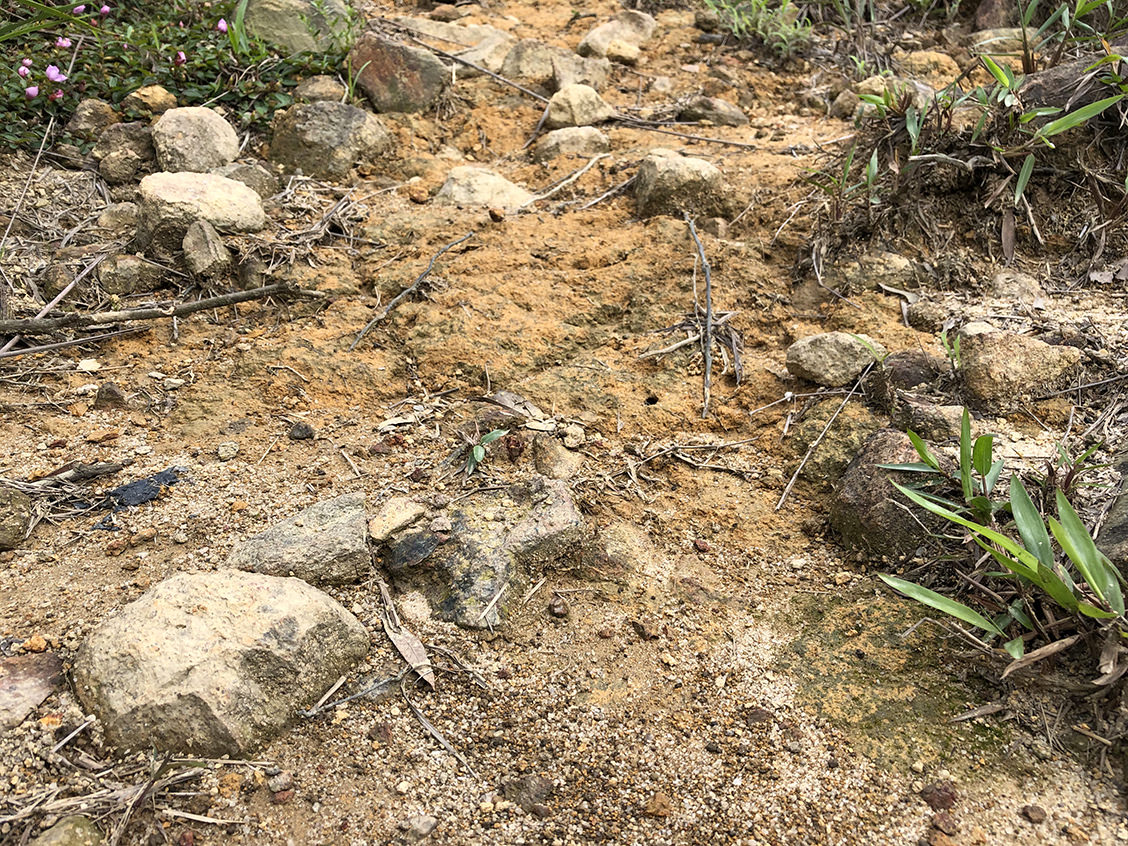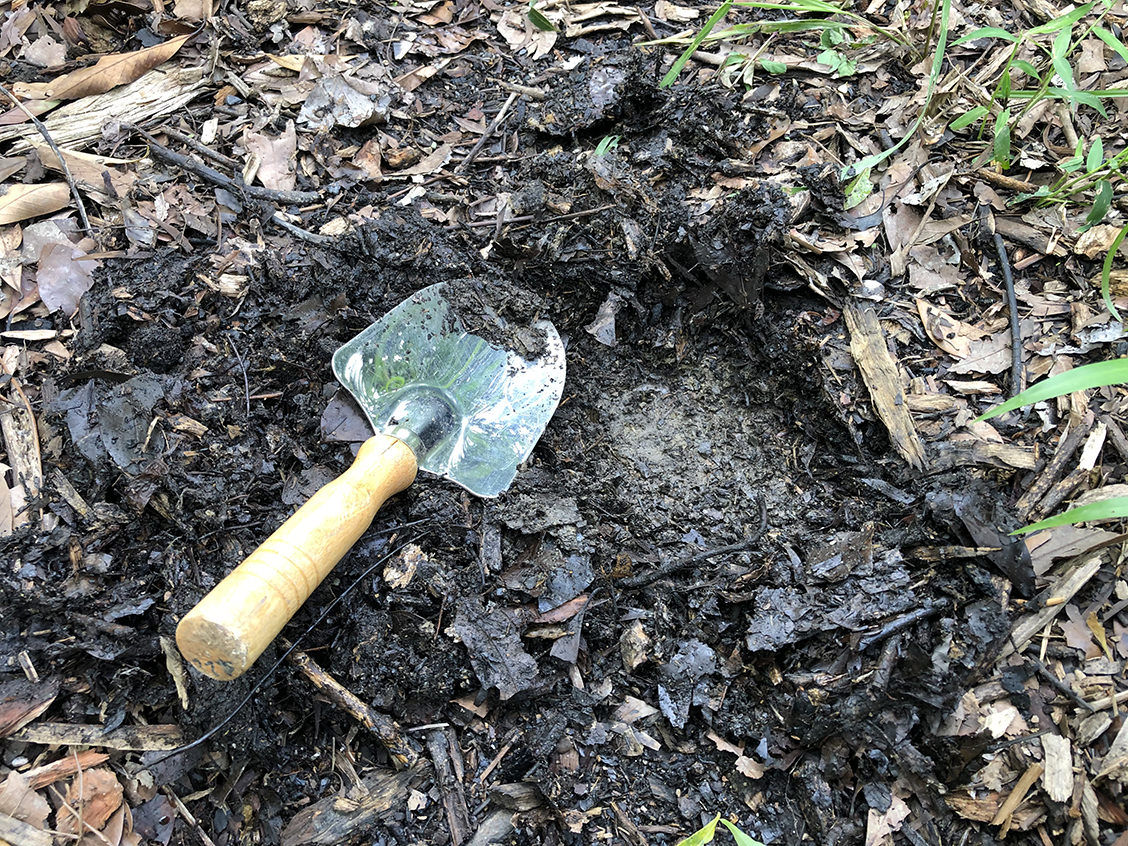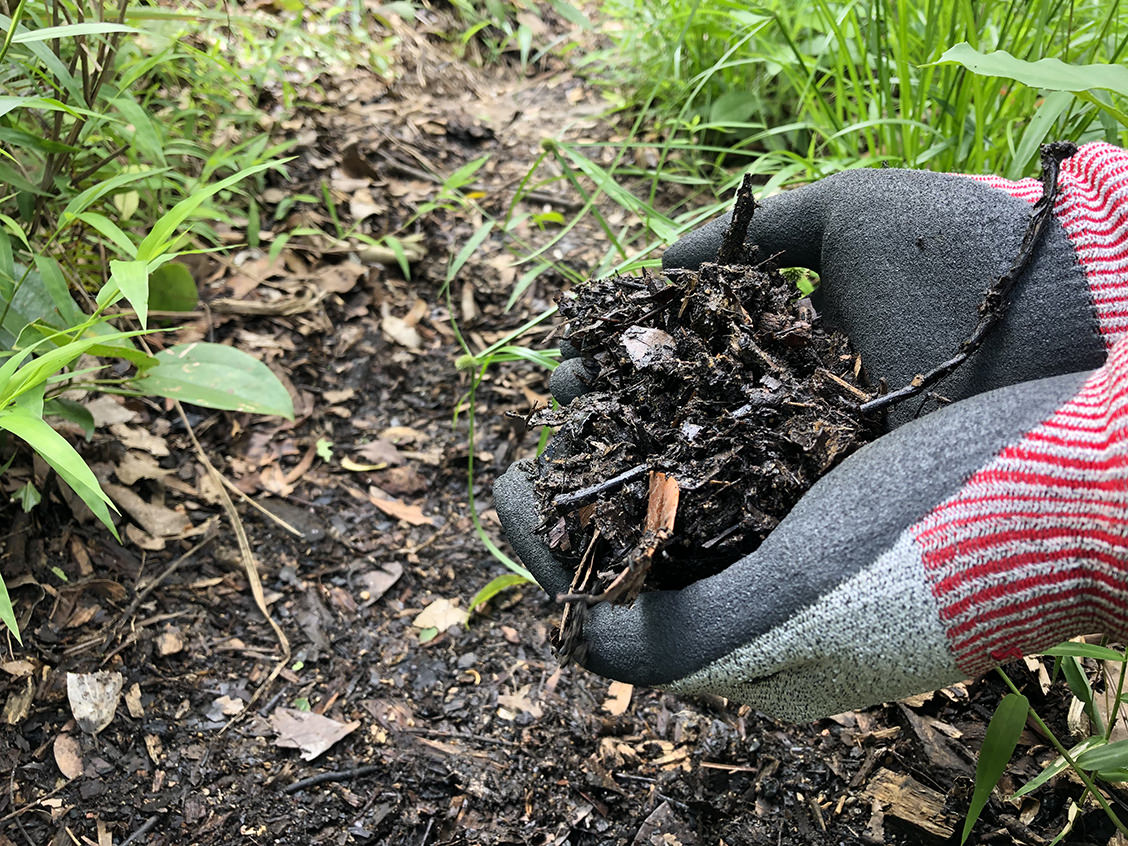

Hong Kong’s primary forests were destroyed centuries ago by logging for land, fuel and building materials. Forest loss has many adverse impacts on Mother Nature, including global warming and species extinction. Another pernicious but often overlooked impact is topsoil erosion. Once the trees have been removed, the fragile topsoil is extremely prone to being washed away.
Restoring forest on degraded soils that have been stripped of most or all of their organic content may be practically impossible. This is because many forest plants are adapted to germinate and establish on the forest floor, which comprises one or more layers of organic matter in various stages of decomposition. In the absence of this topsoil, seeds and young plants may lack the nutrition, structure and texture needed for growth. Therefore, restoration first and foremost often involves consideration of how to rectify soil fertility.
Steps taken to amend and improve the soil across our site, whether on lowland terraces, mid-elevation ridges or upland slopes, include applications of compost, wood chip and biochar produced through our own Wood Recycling Programme. Compost and wood chip are both standard treatments which help replenish lost organic components. However, the incorporation of biochar to a compost and wood chip mix (as a ‘mulch mixture’) drastically enhances the value of the application. This is because biochar facilitates the decomposition of wood chips, binds valuable nutrients and slowly releases them back into the soil.
We have found that a 1:5:5 mulch mixture by volume of biochar, wood chip and dried leaves can significantly improve soil quality within just one year following application. The remediation of exposed subsoil back to fertile, black topsoil offers hope for the sustained, healthy growth of both existing trees and planted seedlings.


